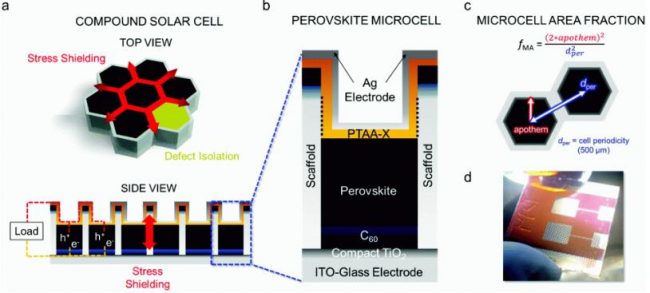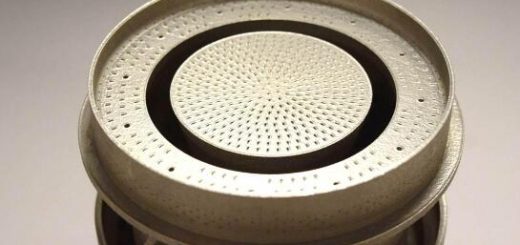T3DP’s New Volumetric 3D Printing Process May Finally Pave Way to 3D Printed Solar Cells
A fascinating project, which began in 2013 but is still in its infancy, may finally bring together two of the most promising technologies of today: solar energy and 3D printing. Combining material science and advanced geometries, the startup T3DP is working on a new generation of 3D printed solar cells that could more than double the conversion efficiency of today’s flat solar panels, thus making 3D printed solar a truly viable and cost-effective solution.
From a 3D printing point of view, the solution proposed by T3DP is based on a patented volumetric 3D printing process which leverages a study conducted by Stanford researchers on perovskite materials for solar cells as reported by Electrek. As the specialized online publication explains, perovskite is the “solar power media darling that is slowly inching toward the marketplace. Constant and quick evolution has earned it outsized attention […] some are suggesting pilot products in 2018 and the product recently broke 26.4% efficiency in labs.

![]() Learning from fly
Learning from fly
The Stanford researchers created a compounded solar cell consisting of perovskite microcells encapsulated in a hexagon-shaped scaffold. This was inspired by the complex geometry of a fly’s eye. Utilizing the hexagonal substructures of the fly eye they’ve strengthened and stabilized the solar material. Reinhold Dauskardt, Professor of Materials Science and Engineering and senior author of the study, explained that “perovskite would barely survive the manufacturing process, let alone be durable long-term in the environment. [Our research] has a beautiful honeycomb shape with built-in redundancy: if you lose one segment, hundreds of others will operate. Each segment is very fragile, but it’s shielded by a scaffold wall around it.”
The honeycomb shielded perovskite cells got nearly the same power-conversion efficiencies compared to a standard photovoltaic cell, and held onto relatively high rates of efficiency after stress testing with extreme temperature (185F) and relative humidity over a six-week period. One of the main reasons perovskite is cheaper than silicon solar cells – Elektek also explains – is that you can manufacture the material at temperatures far below that of the silicon. The cost of the energy to push the high temperatures needed to create the solar power grade silicon is a main driver of the cost of the product. The main challenges, so far for perovskite, have been the above noted fragility and a tendency to lose efficiency very quickly.

![]() 3D Printing to make perovskite solar cells work
3D Printing to make perovskite solar cells work
Daniel Clark, the inventor of T3DP’s 3D printed solar energy methodology, went one step further by integrating volumetric 3D printing in the perovskite solar cell manufacturing process. This could lead to a new world record in terms of conversion efficiency an thus a much higher ROI on solar as well as more aesthetically pleasing products. “We are working on placing our solar triangles in tandem with perovskite that should break another record with a tandem junction at 45-55% Panel Efficiency,” Clark exclusively explained to 3dpbm.
After founding the startup in 2013 and filing for the first patent in 2014, the first two patents were approved in 2018. Now he and his team are ready to scale up. In order to obtain more funding to sustain this next phase they are submitting a proposal to “A Challenge From Sweden for Swedish Sustainable Mobility.” If they place in the top three next month, they will receive 1.5 million euros to develop their 3D solar and volumetric 3D printing.
While several attempts have been made at 3D printing solar cells in the past, without obtaining great success, T3DP’s approach seems solid. According to Daniel Clark, it was recently validated by one of the owners at Infinity Energy with a World Record Panel Power Efficiency of 36% per m². Standard flat cells are rated at about 20% efficiency.
Source:3D Printing Media Network




Recent Comments